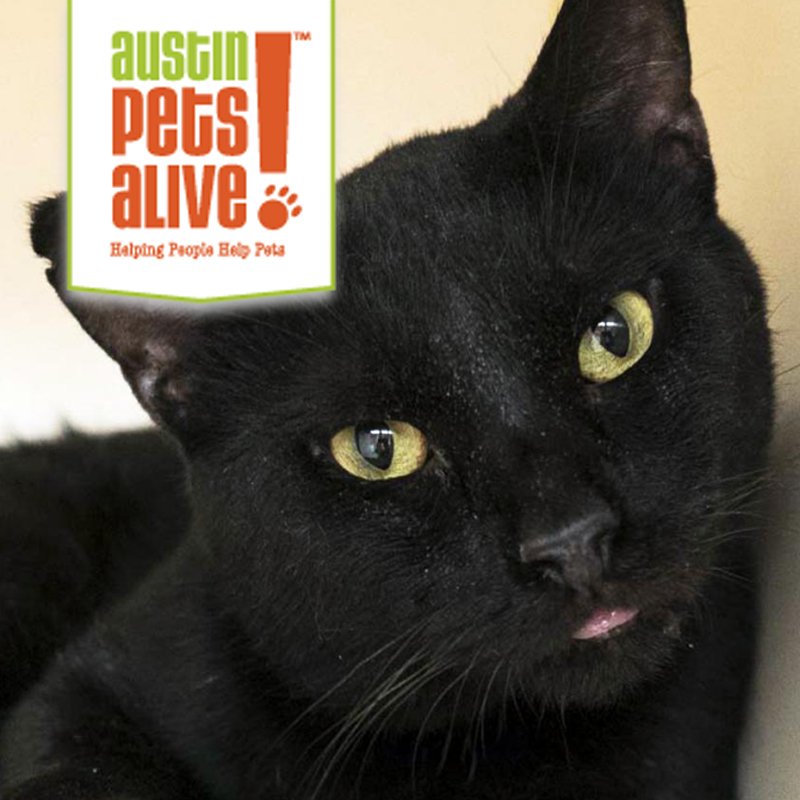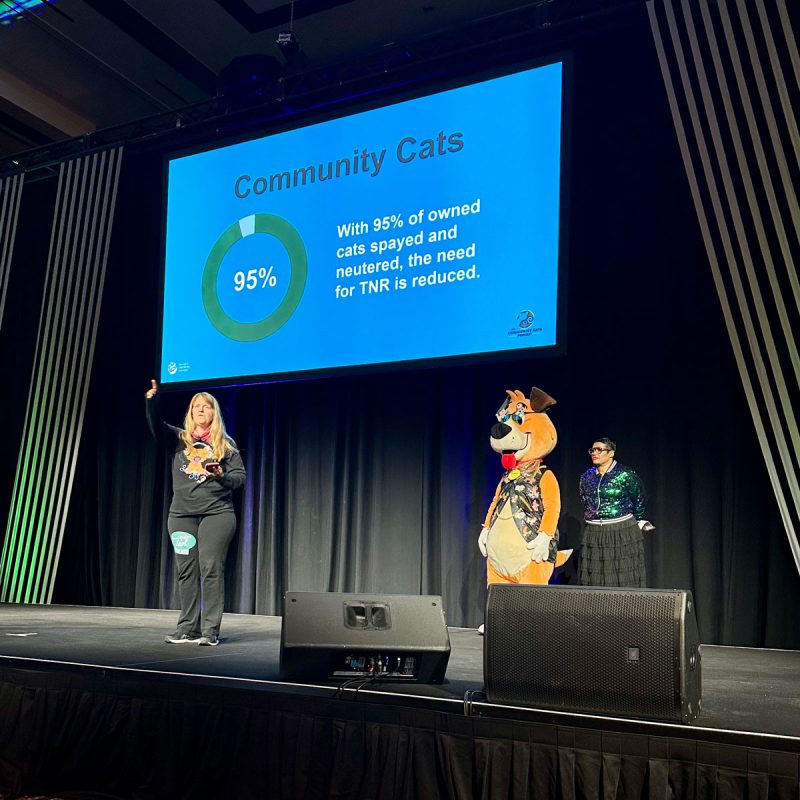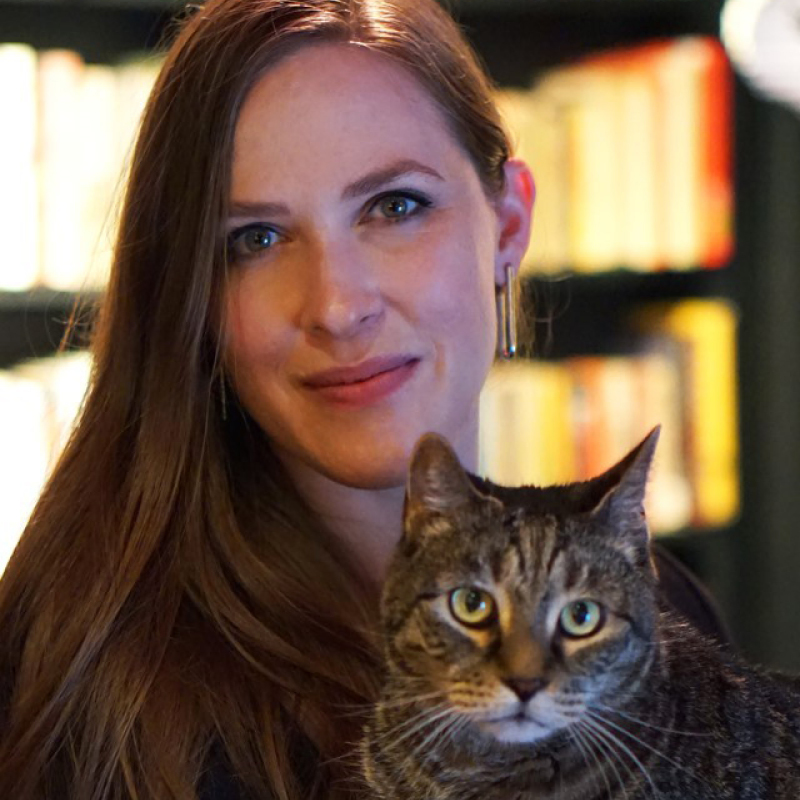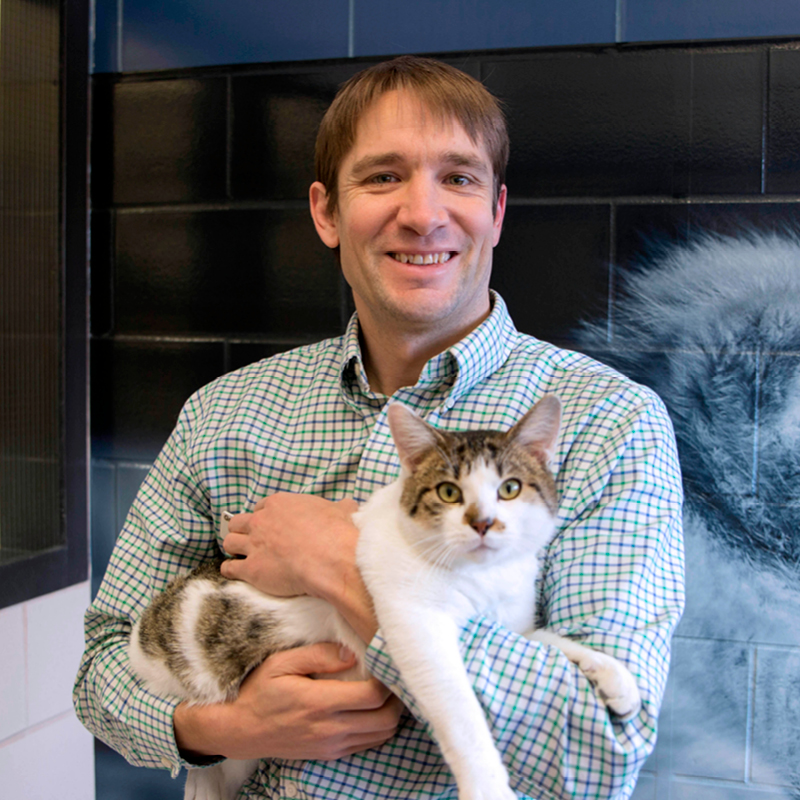
Starting this week and continuing all year, we are doing a series on Feline Leukemia (FeLV) adoption programs around the country. During the second week of each month, we’ll share a different group’s answers to our questions about their FeLV+ adoption program. We hope you enjoy and are inspired by this series, and if you have a suggestion for an organization we should consider profiling, please shoot me an email.
FeLV Adoption Program Profile: Austin Pets Alive!
For the first post in our FeLV adoption program series, we emailed with Monica Frenden, Maddie’s Director of Feline Lifesaving at Austin Pets Alive! (APA!) in Austin, TX, who shared this good news with us: “There are so many more orgs doing FeLV adoptions now, it’s wonderful to see! Through learning the facts in the FeLV session of my Maddie’s [Fund] Lifesaving Academy apprenticeship, I have about a dozen graduates who are now adopting our FeLV cats at their home shelters and it’s so amazing. The tide is turning for these cats! Thanks for this opportunity to spread the word!”
Here are our questions and Monica’s answers about APL!’s FeLV adoption program:
Why and when did you start an FeLV adoption program?
Austin Pets Alive! started its Feline Leukemia Adoption program in 2011. Our focus has always been on animals at greatest risk of shelter death, and cats who test positive for FeLV are amongst the highest risk. Realizing that, and also the fact that these cats can be adopted and have great quality of life, our program was born.
How many cats do you adopt out annually?
In 2018, we adopted out 338 FeLV-positive cats! Every year we watch this number grow. We expect that trend to continue as adopters learn the facts and welcome these amazing cats into their homes.
Do you provide or cover vet care for the cats after adoption?
APA! provides free veterinary care for the life of the cat for ailments related to the virus, plus end of life services when it is time. This eliminates adopter fears of taking home an expensive cat. It often surprises shelters to learn that this service is affordable, costing APA! well under $100 per cat for its lifetime support. FeLV-positive cats get the same routine illnesses as viral negative cats and typically respond to the same inexpensive treatments. Invasive heroics are spared when it is truly time for end of life, so offering FeLV-positive cats for adoption, or even adopting one, does not have to correlate to an expensive endeavor!
What are the benefits to running an FeLV adoption program?
There are so many benefits it will be hard to list them all! First, positive cats are saved from needless shelter death and are adopted into loving adoptive homes. Every year we are educating the community that, contrary to old myths, positive cats are neither sick nor suffering and they have the same quality of life as a negative cat.
Our FeLV program has tremendous adopter, donor, and volunteer support from individuals who see for themselves that these cats are worth saving and want to be involved in the mission. In fact, in an ongoing Maddie’s Fund® adopter satisfaction study at APA!, we see adopter satisfaction rates are higher for adopting a viral positive cat than a negative cat! It is proving what we have anecdotally seen for years: people love these cats and they are highly adoptable!
Lastly, because we have such a robust FeLV program at APA!, we are the epicenter for much needed research on this virus and have just completed a massive two-year study on testing methods, which we hope will propel lifesaving advances across the world.
What are the challenges of running an FeLV adoption program?
There are many outdated myths and irrational fears that surround this virus; overcoming those through research and education is a constant priority. As more and more research is published, veterinarians and shelter workers need to stay abreast of the facts and prepare to leave behind misconceptions. Particularly in veterinary private practice, where this virus is rarely seen, shelter medicine will need to pave the way and work to share our knowledge.Thankfully, as more shelters embrace FeLV adoptions, and more adopters welcome these wonderful cats into their homes, we are seeing the tide change for these cats.We are incredibly optimistic for the future of FeLV-positive cats!
Visit the Austin Pets Alive! FeLV Adoption Center website to learn more about the organization and their FeLV program!






